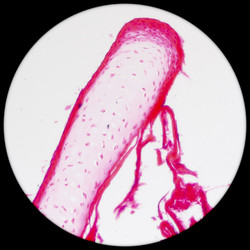Joint European, Indian, Brazilian and American efforts lift the veil on human skeleton mysteries
If two heads are better than one, uncovering complex biological mechanisms such as the interplay between bone cells, matrices and systems requires even more grey matter. Whilst bone cells are known to play an important role in metabolism, regulating health and protection from disease, how they do so still remains unclear. Prof. Anna Maria Teti, researcher at the Department of Experimental Medicine of the University of L’Aquila in Italy, led the INTERBONE project for over three years with the aim of increasing cooperation between young scientists to help solve this mystery. Thanks to more than EUR 230 000 in EU funding and a close cooperation between six universities from the Netherlands, Italy, Brazil, the USA and India, Prof. Teti’s multidisciplinary, 20-strong team recently obtained new information on the interactions between bone and other tissues in three key areas of health: energy metabolism; development of leukemia; and fracture healing, tissue regeneration and a biocompatible orthopedic implants. The research partly built on previous findings as well as in vitro and in vivo experiments. ‘Our fellows published in top class journals, including Nature and Cell,’ Prof Teti explains. ‘Major results unveiled, among other things, an important role of lipocalin 2 in bone loss, a role in this context of energy metabolism, the importance of osteoprogenitor cell dysregulation in leukemogenesis, the tight relationship between bone cells and endothelial cells in skeletal unloading impairing osteogenesis, as well as the improved osteointegration of new biomaterials in the bone healing process.’ Prof. Teti insists that these breakthroughs would not have been possible without the project’s focus on staff exchanges, training and networking activities, all organised with a view to building strong and long-lasting bridges between Europe and other regions of the world. ‘It has been very fruitful for the trainees and for the principal investigators. We could challenge ourselves to bring knowledge, technical skills and intellectual approaches to the next level for new and more complex multidisciplinary studies. We very much appreciated this opportunity which strengthened existing collaborations and established new ones.’ Participating fellows come out of the three-year project with a stronger knowledge and expertise, specifically in the generation of animal models, in vitro and in vivo assays, endothelial cell biology and cross-talk with bone cells and hematopoietic cells, bone-cell endothelial cells cross-talk in unloading conditions and tissue repair and, finally the use of innovative biomaterials to improve osteointegration and fracture healing. While the project is now completed, the consortium intends to keep strengthening the collaboration, perhaps even through another similar exchange programme. Over the long term, the knowledge accumulated in INTERBONE related to disuse osteoporosis, leukemogenesis and wound healing could yield considerable benefits for patients. For further information, please visit: INTERBONE http://www.interbone.org/(opens in new window)
Countries
Italy



